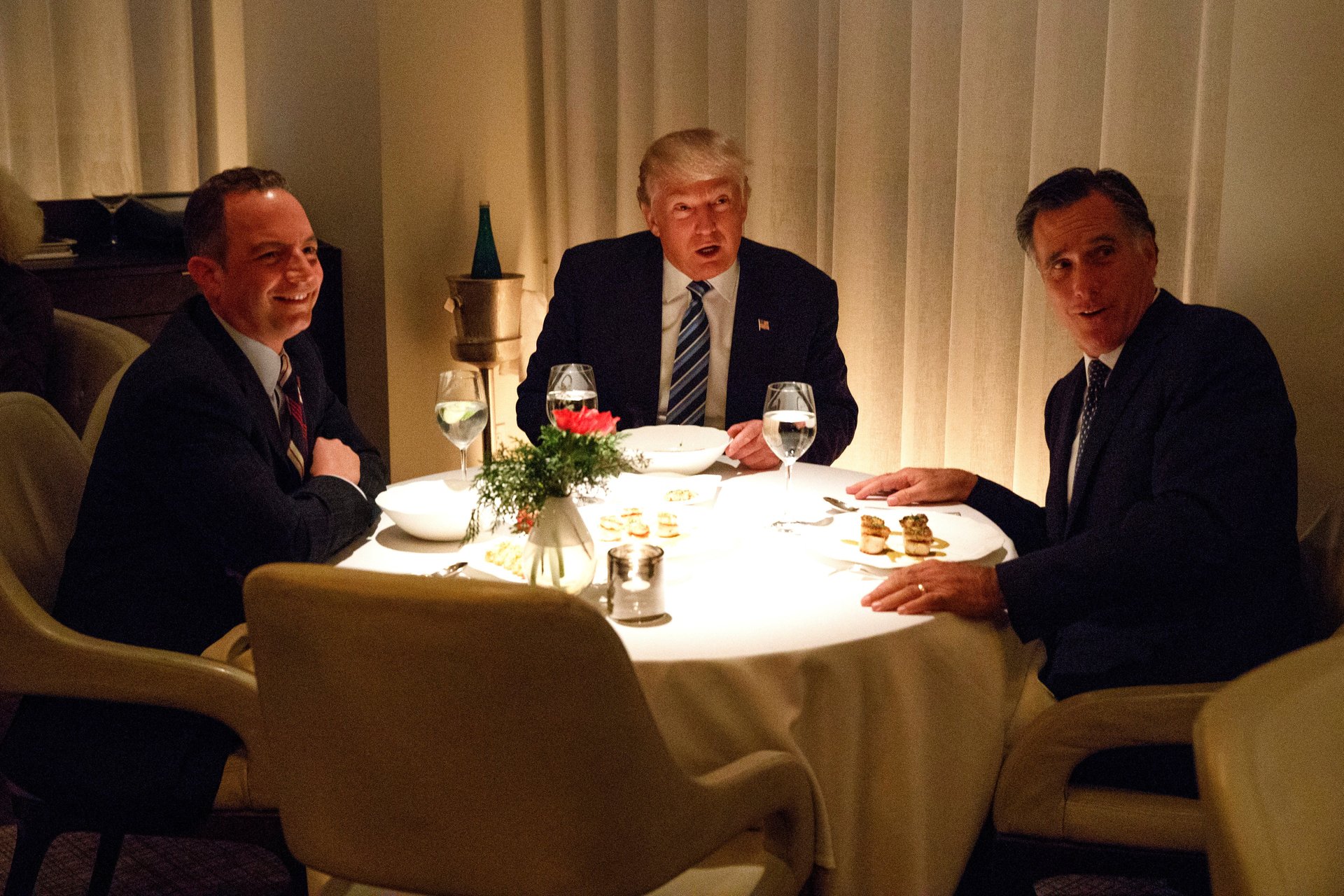The compelling stories behind the most revealing photos of 2016
The news from 2016 has often felt chaotic, but every once in a while, a perfectly-timed photo crystallized exactly what happened. These rare images captured the decisive moment, the telling detail, the perfectly staged message, and often offered a different perspective on what was said. Here is Quartz’s pick of the year’s most revealing news photos, and the compelling stories behind them.
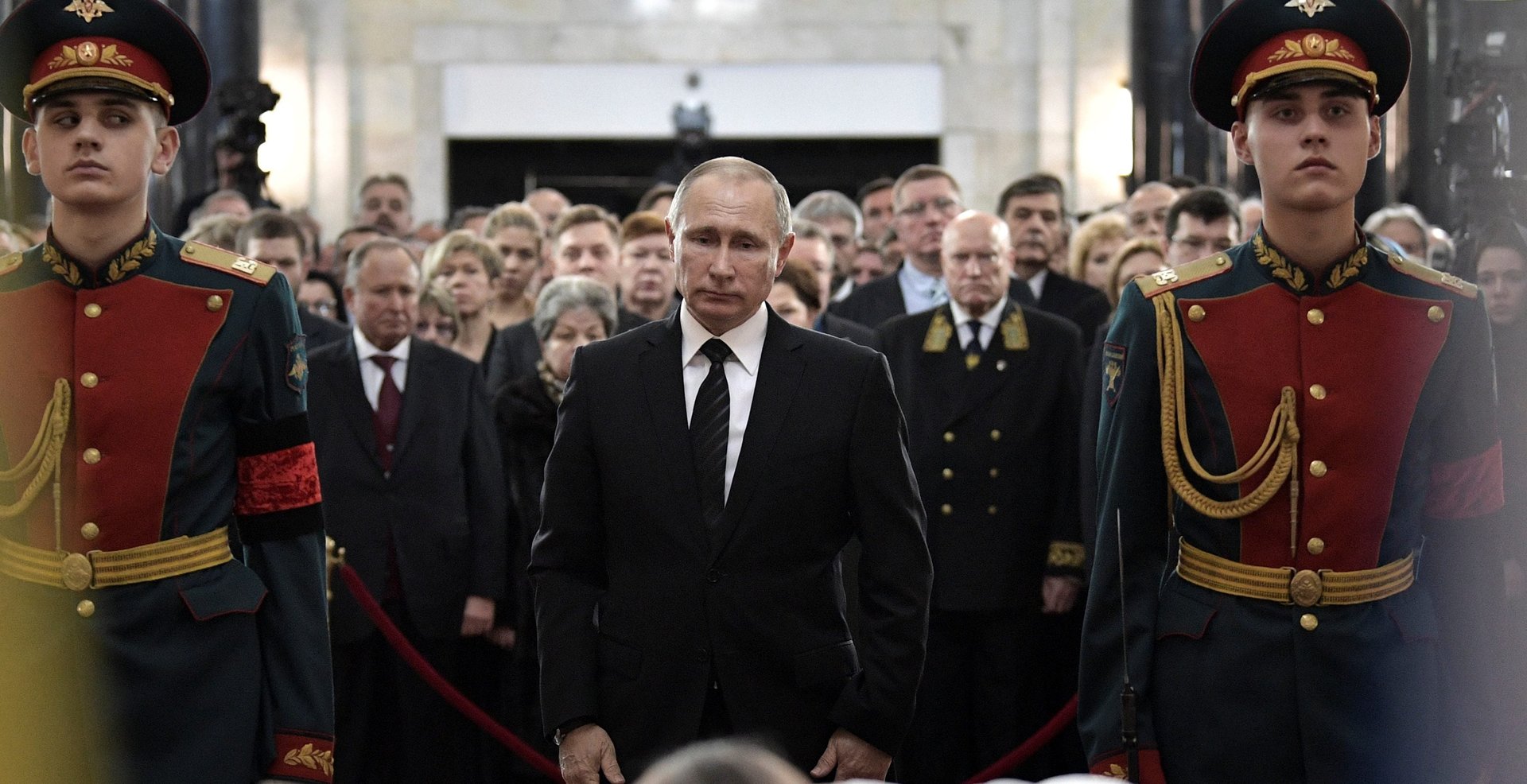

The news from 2016 has often felt chaotic, but every once in a while, a perfectly-timed photo crystallized exactly what happened. These rare images captured the decisive moment, the telling detail, the perfectly staged message, and often offered a different perspective on what was said. Here is Quartz’s pick of the year’s most revealing news photos, and the compelling stories behind them.
Trump and family meet Abe
In November, photos of US president-elect Donald Trump and his family meeting with Japanese prime minister Shinzo Abe raised concerns about the coming administration’s ethical norms and transparency. US press had not been invited to document the event, relying instead on images supplied by the Japanese government. Selina Cheng writes:
Perhaps most unsettling, Trump’s team doesn’t seem to care enough about appearances to control the images that surfaced from Japan, or to respond to them. Despite conflict of interest concerns, in these photos, Ivanka and her husband make no effort to avoid the camera, instead posing for “candid” discussion shots.
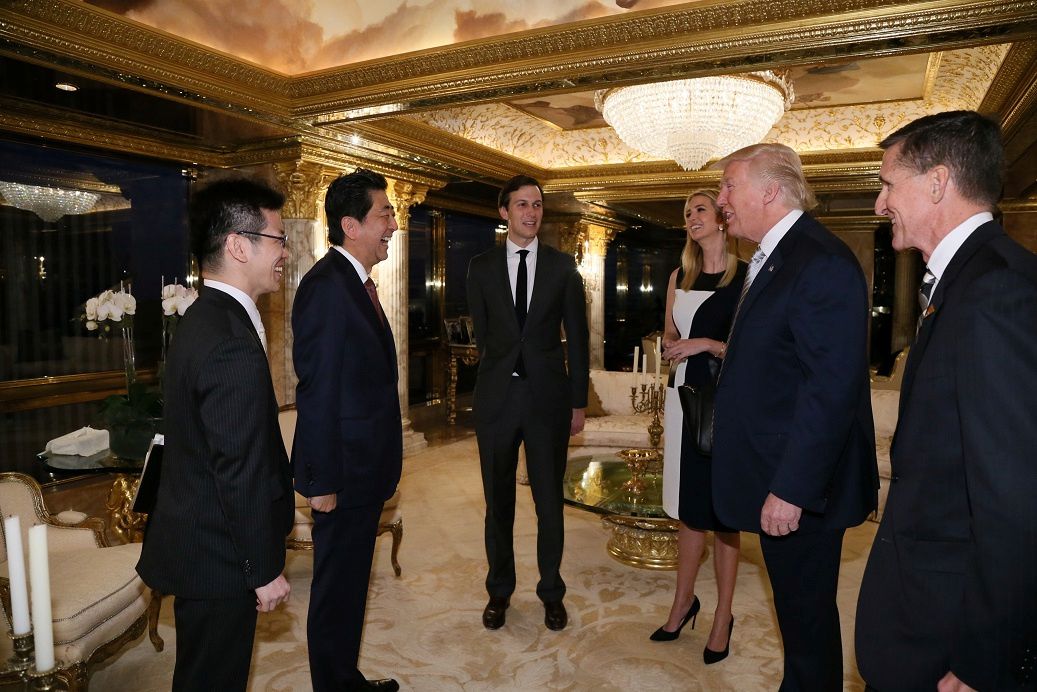
A protestor stops police in Baton Rouge
In this arresting July image of a Black Lives Matter protest in Baton Rouge, a sun-dress clad Ieshia L. Evans is shown standing serenely in the middle of the road, juxtaposed with police officers who seem dressed for battle. The unusual contrast makes this image one for generations of study to come.
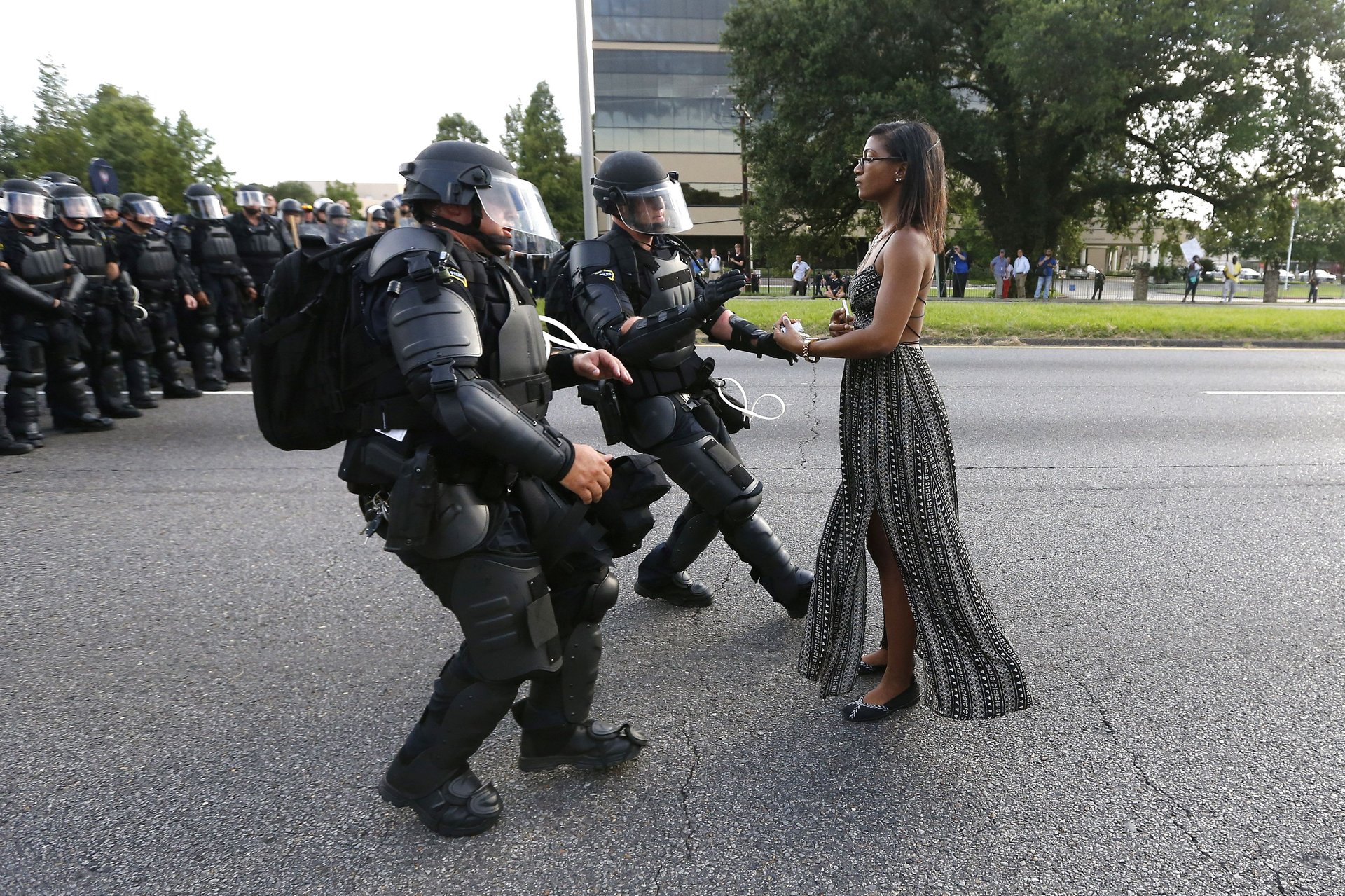
Bill Clinton’s fetching pantsuit
Former US president Bill Clinton took the stage at the Democratic National Convention in July, as the spouse surrogate of presidential nominee Hillary Clinton. Fashion reporter Jenni Avins gave his ensemble the full treatment, applying the same aesthetic scrutiny that the wives of powerful men have traditionally endured:
We’ve yet to read an interview with the person who styled Bill’s silver locks for last night’s DNC appearance, or even see a brief in Women’s Wear Daily or GQ crediting the designers who dressed him for the occasion. Did he buy his suit online, like Melania Trump’s Net-a-Porter-purchased Roksanda last week? Did he go to a store? Work directly with a designer? We just don’t know, which means it’s going to be really difficult for this particular navy suit to sell out, as so many of the dresses worn by Michelle Obama have over the past eight years. Was it Hickey Freeman? Hart Schaffner Marx? Again, we just don’t know.
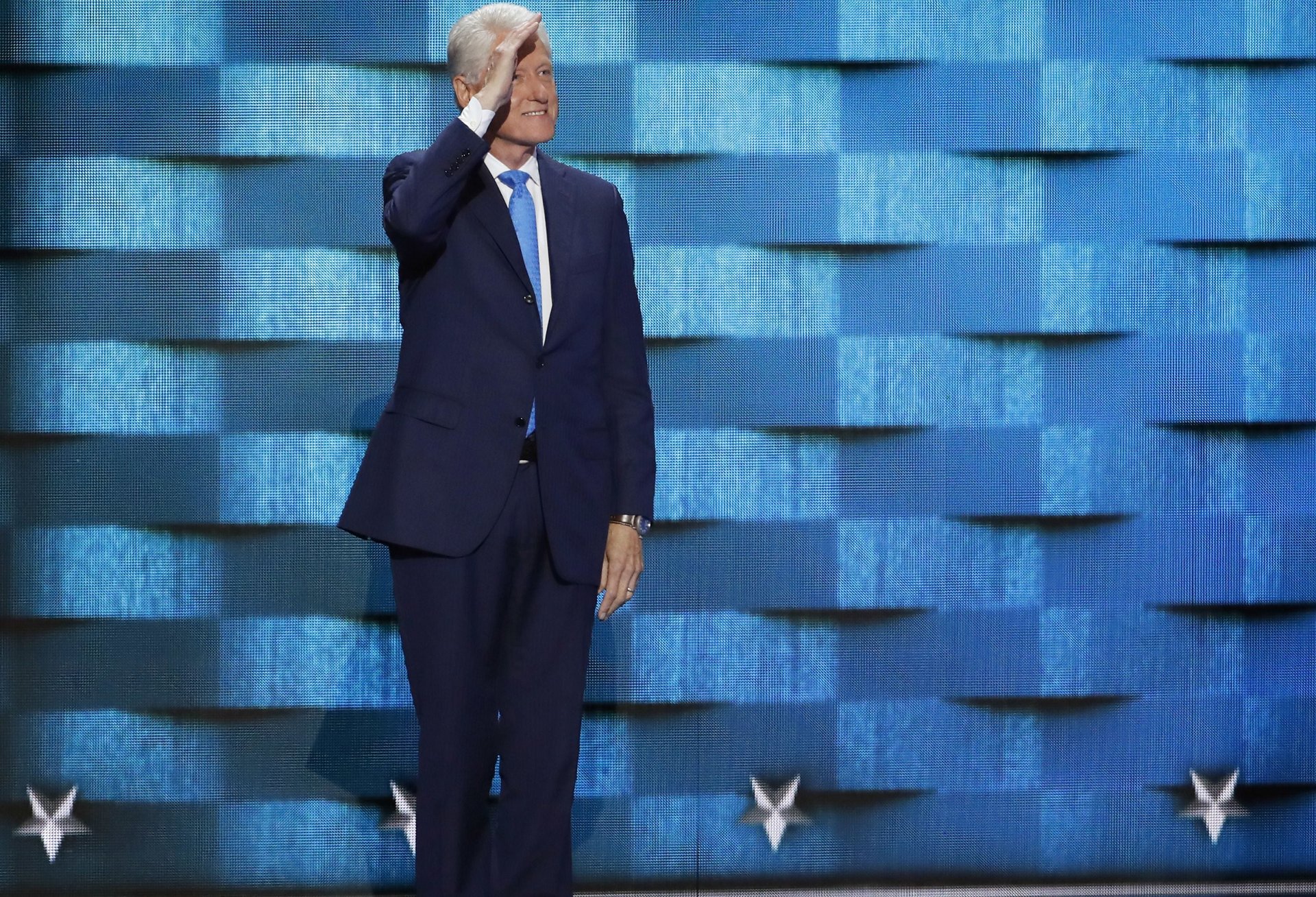
A Muslim woman stands out from the crowd in Denmark
A perfectly-timed single frame shot at a Danish community center in March illustrates the fear and distrust surrounding refugees and migrants in Europe. Denmark has taken in 30,000 refugees and migrants over the last two years, despite rising anti-migrant sentiment and political gains on the far-right. As photographer Olafur Gesston told Quartz:
[The woman on the right] might as well be Danish, and some of the people on the left might be in favor of the asylum center. But I think the symbolism is striking. For me, this sad image symbolizes Denmark today . . . Growing racism, xenophobia, exclusion and fear. Walls are being built where we should be tearing them down.
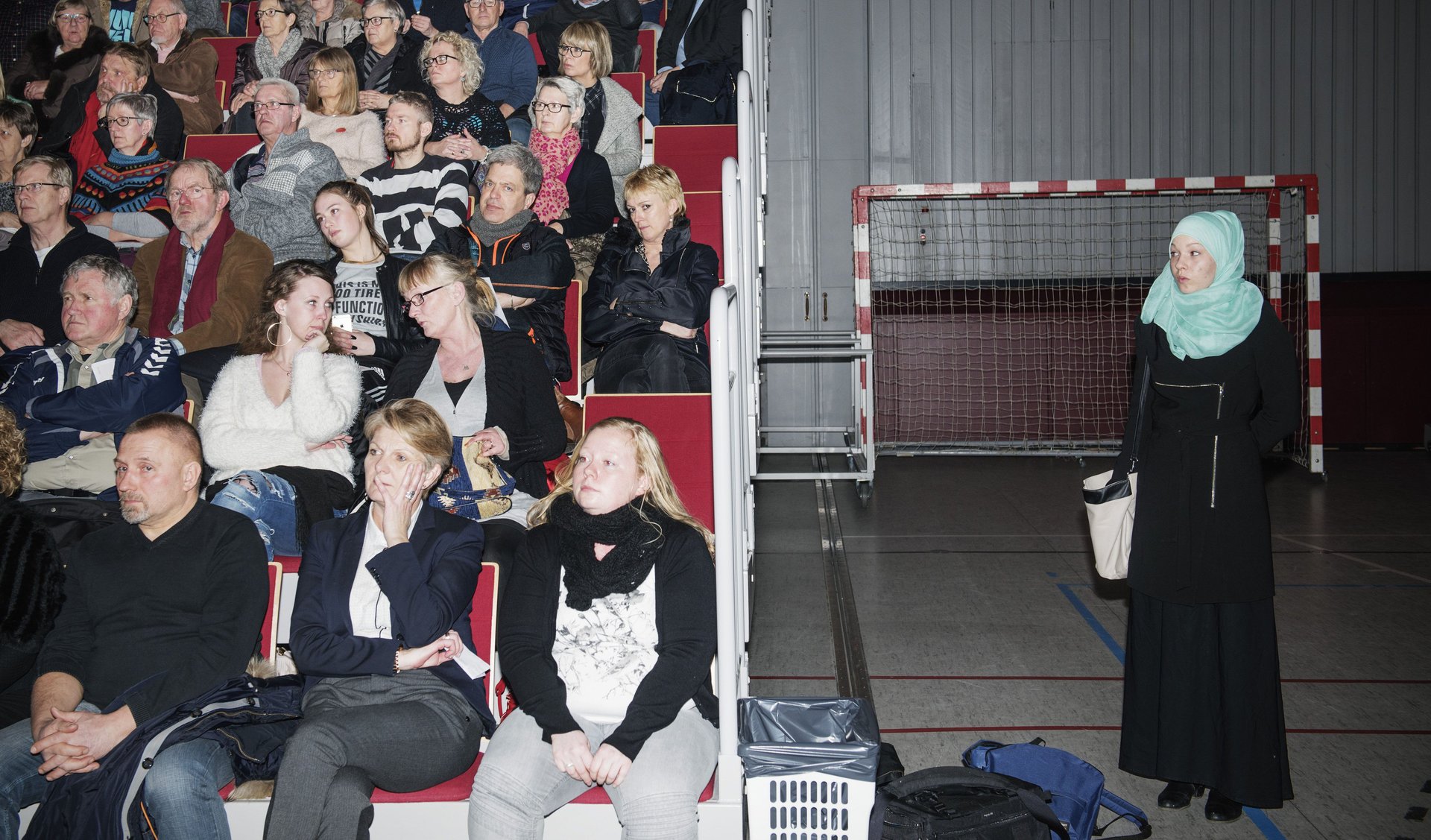
A young Russian soldier side-eyes Putin
A cinematic December shot of Vladimir Putin, released by Russian state-controlled media, bristles with coded imagery. The Russian president appears downcast at the funeral of Andrei Karlov, the recently-assassinated Russian ambassador to Turkey, while an unidentified young soldier peeks uneasily in his direction:
In this photo by Alexei Nikolskyi, a young soldier on the left is trying to look toward the approaching Putin, directing an observer’s attention to the president. This sense of watchfulness is enforced by the crowd observing him intently from behind. It’s a message of both Russian strength and general anticipation: The frame is filled with people at Putin’s sides and back as he considers Karlov’s loss, and perhaps, what to do next.
Russia has emerged as a central player in Syria’s civil war, even as the US edges further away from the region, and Karlov’s death may be Russia’s highest-profile casualty of its involvement in the region. Many have compared the murder to the 1914 assassination of Franz Ferdinand, a trigger event for WWI, fearing that the Dec. 19 murder in Ankara could shake up already-tense relations.
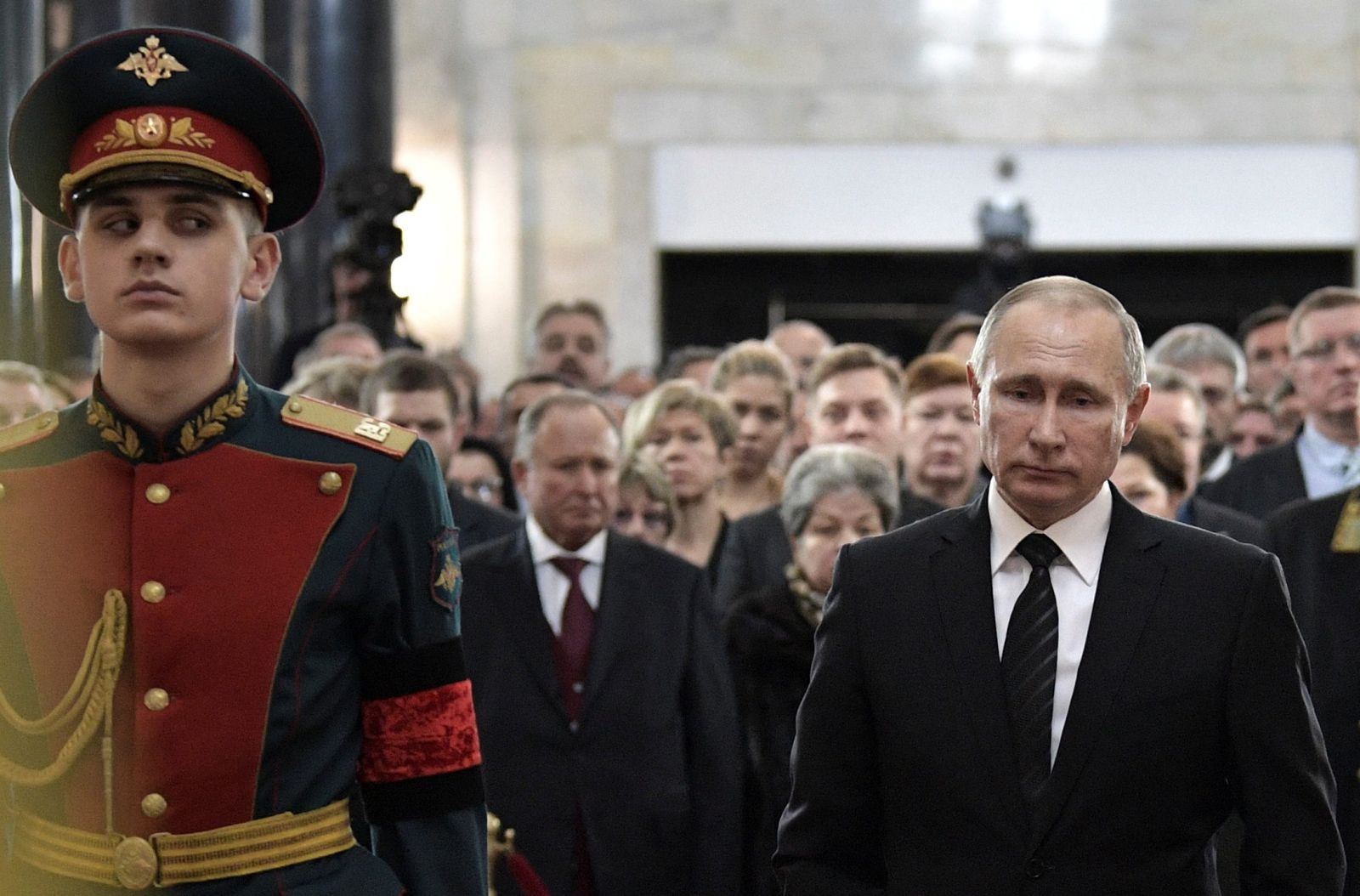
The world’s most famous refugee re-appears, 31 years later
In October, a heartbreaking photo taken by Pakistani authorities completed the story of one of the world’s most famous refugees: National Geographic’s “green-eyed girl.”
Gula’s haunting green eyes captured the world’s attention in 1985, when her photo was taken by world-famous photographer Steve McCurry in a refugee camp in Pakistan and published on the cover of National Geographic. Hers became the face that defined conflicts in Afghanistan during Soviet Occupation of the 1980s. Years later, McCurry joined a National Geographic film crew to track Gula down; they found her in 2002 in a remote Afghan village, where she lived with her family, and McCurry shot an updated portrait.
Now Gula has new photographs in the public eye, which seem to complete a tragic trilogy of life as an Afghan refugee. This week, Pakistani authorities released the photo she used on her fraudulent ID application form, as well as a mugshot taken before a court hearing.
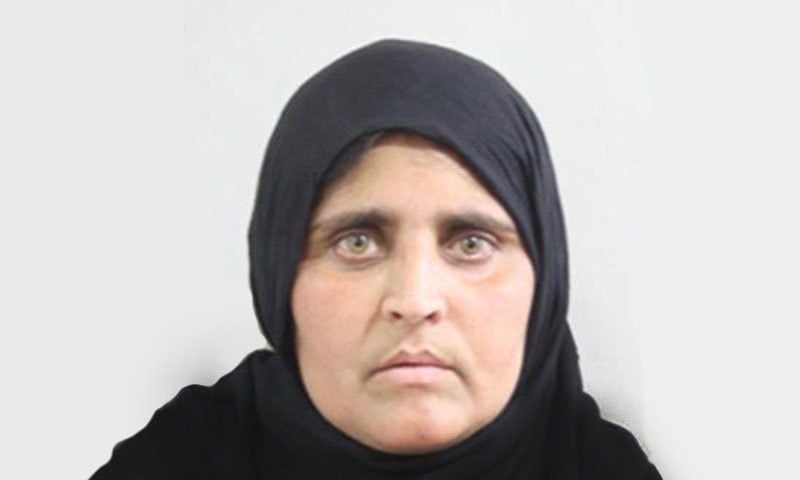
A wildlife photography prizewinner reveals surprising signs of climate change
A well-placed shot of an orangutan high above earth won its author the Wildife Photographer of the Year award in October. But what might seem like a simple, beautiful image comes with a troubling backstory:
As peaceful as the image is, it’s part of a disturbing larger series called “Entwined Lives,” which tells the heartbreaking story of endangered apes facing drought and forest fires in Borneo in 2015. Forced to flee their natural habitat, many young orangutans are caught by poachers and illegally sold as pets.
While Borneo’s wildlife relies on the richness and density of the rainforest in order to survive, the region’s monsoon climate was disrupted in 2015 by the rare El Niño Southern Oscillation effect, which caused prolonged drought and forest fires. Last year, wildfires destroyed over 21,000 square kilometers (8,110 square miles) of the orangutan’s natural habitat. Both smoke and dry spots are clearly visible in satellite images.
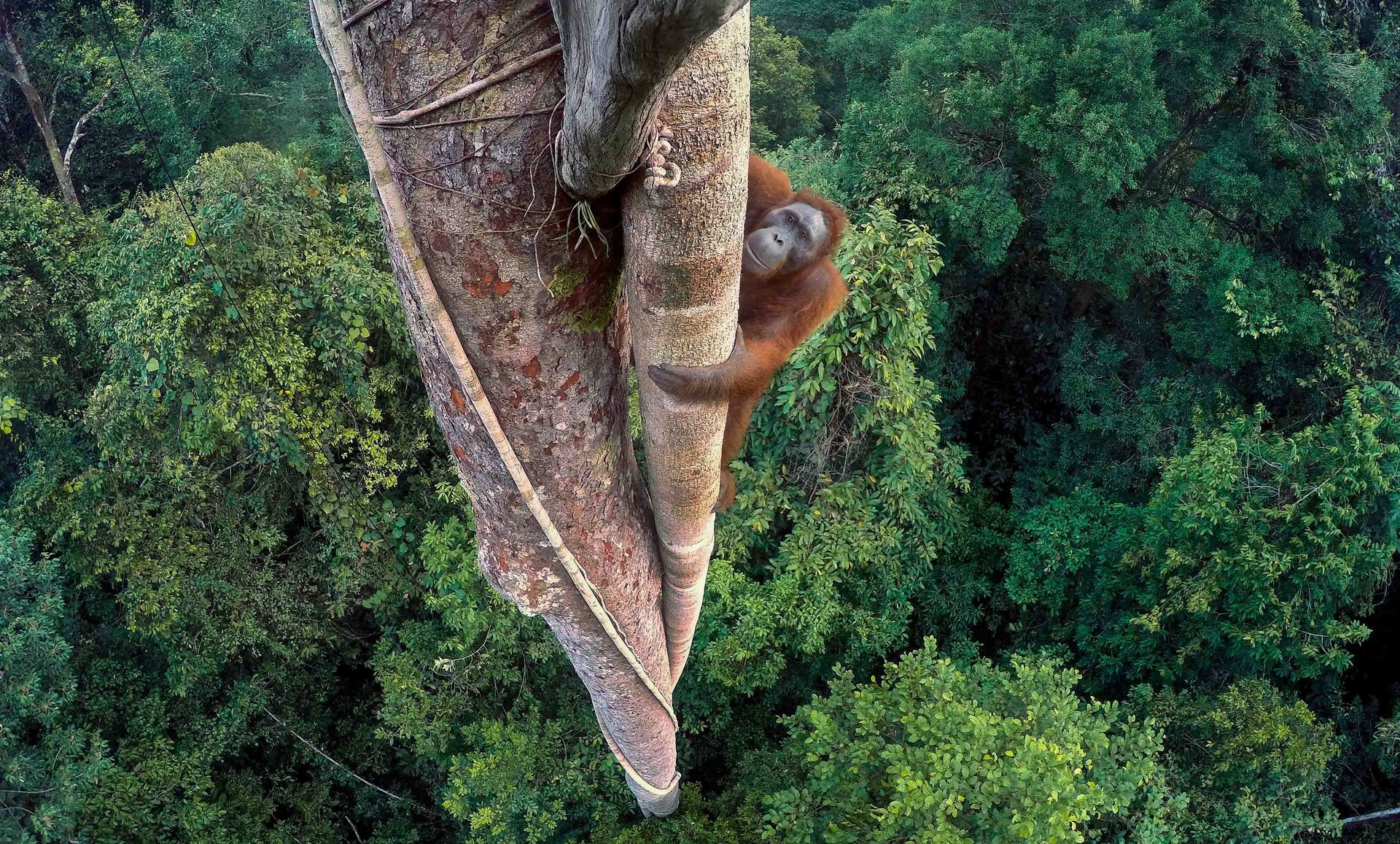
Nairobi’s staggering disparity comes into focus
Sometimes the best way to capture abstract concepts is simply to change your point of view. These drone photos of real estate development jutting up against some of Nairobi’s largest slums illustrate income inequality with crystal clarity . Lily Kuo explains:
Kibera, a sprawling slum that is home to anywhere between 170,000 and 400,000 people, features heavily in Miller’s project. Some estimates put Kibera’s population at one million, making it the largest slum in Africa. New highways, housing estates, and a golf course have been built next to Kibera.
The photos show not just the inequality of Kenya’s capital but how roads and other structures entrench that disparity. “In Nairobi, I wanted not only to focus on ‘rich versus poor,’ but also on the infrastructure, and how infrastructure projects can constrain, as well as free, lower-income residents of the city,” Miller says.
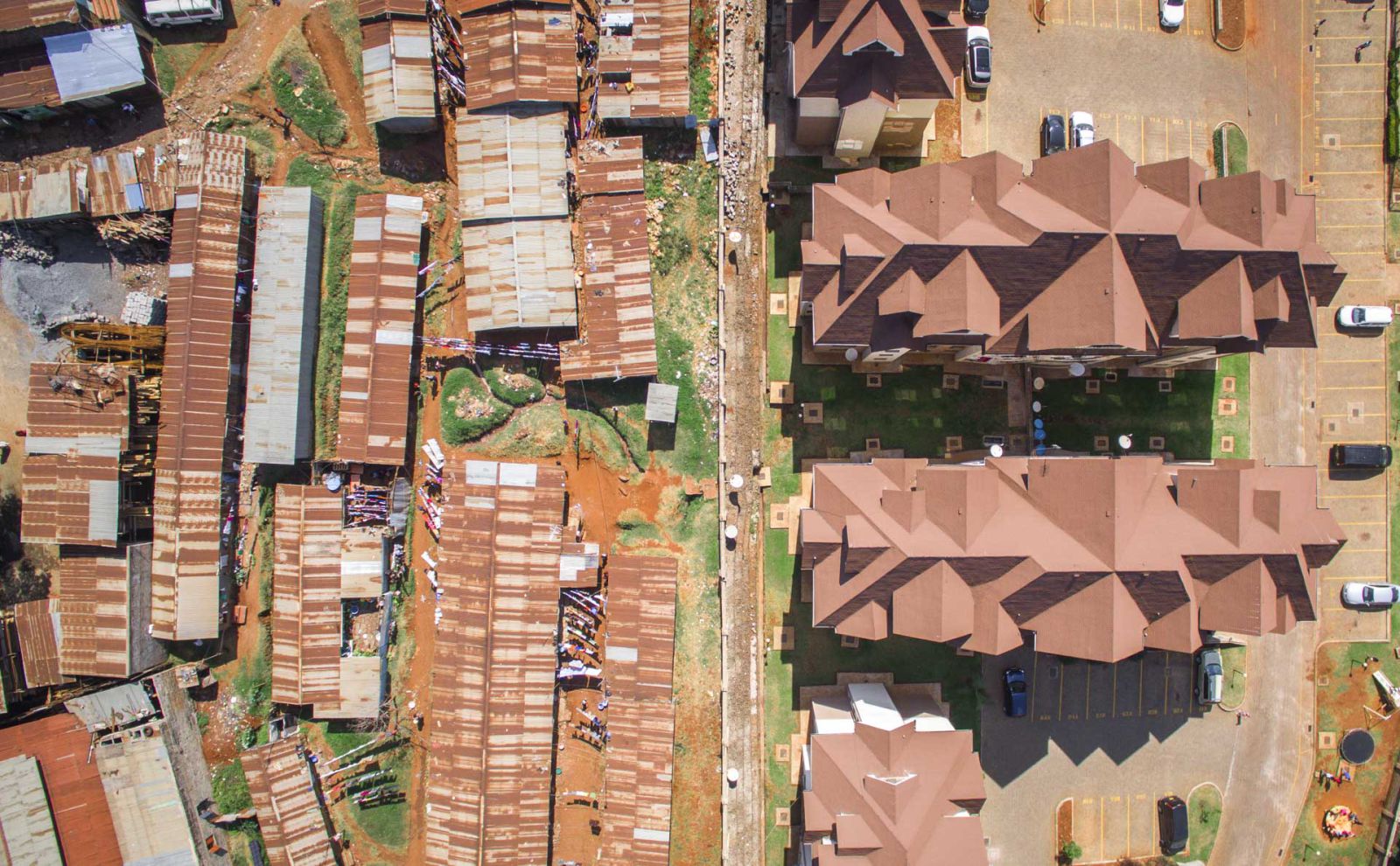
Donald Trump’s body language speaks volumes
Donald Trump has a way with words. And hands. His subtle maneuvers while speaking might often go unnoticed or overlooked, but body language experts can offer insight into a gesture’s unconscious message. The US president-elect’s tendency to point might hint at seething anger, while other unusual motions show warmth and compelling charisma.
We showed a photo of Trump’s double finger-point to Lillian Glass, a body language and communications expert based in Florida, and asked her what it could possibly mean. Glass wasn’t shown the debate video footage.
“It’s like he’s very angry. It’s very interesting,” says Glass. “The first one, his finger is pointing up, and he’s saying, ‘let me tell you something’, that’s like a yell. The second one, he’s super angry. This is the ultimate anger.”
Glass says Trump’s double finger-point expressed admonishment, and emphasizes that the gesture is “very uncommon.”
“It diminishes [the person you’re talking to], and makes people very defensive. It’s kind of a condescending type of thing,” she adds.
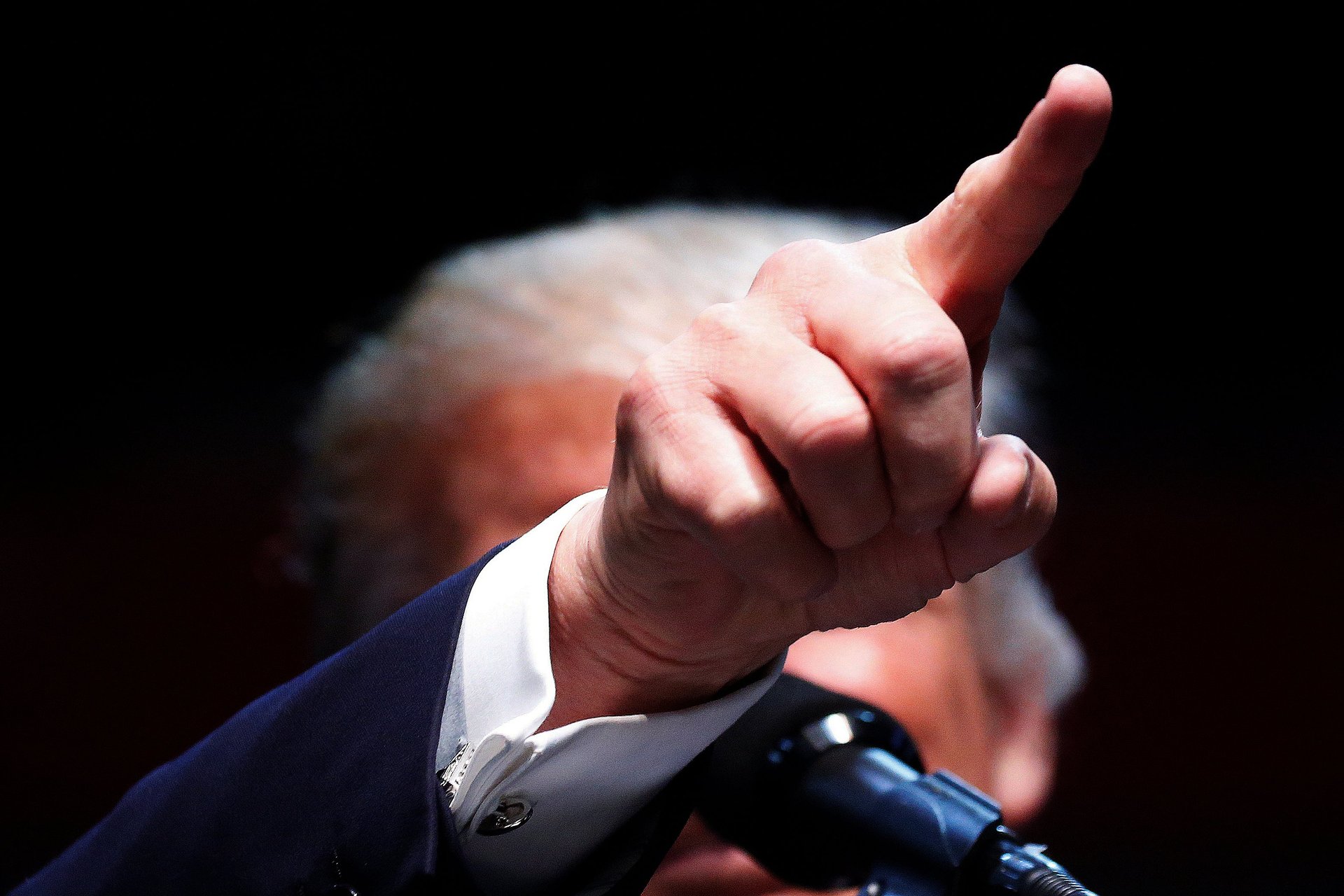
After Trump’s victory in November, the Republican president-elect met with many potential cabinet picks, including Mitt Romney, a somewhat embarrassed-looking former denouncer.
